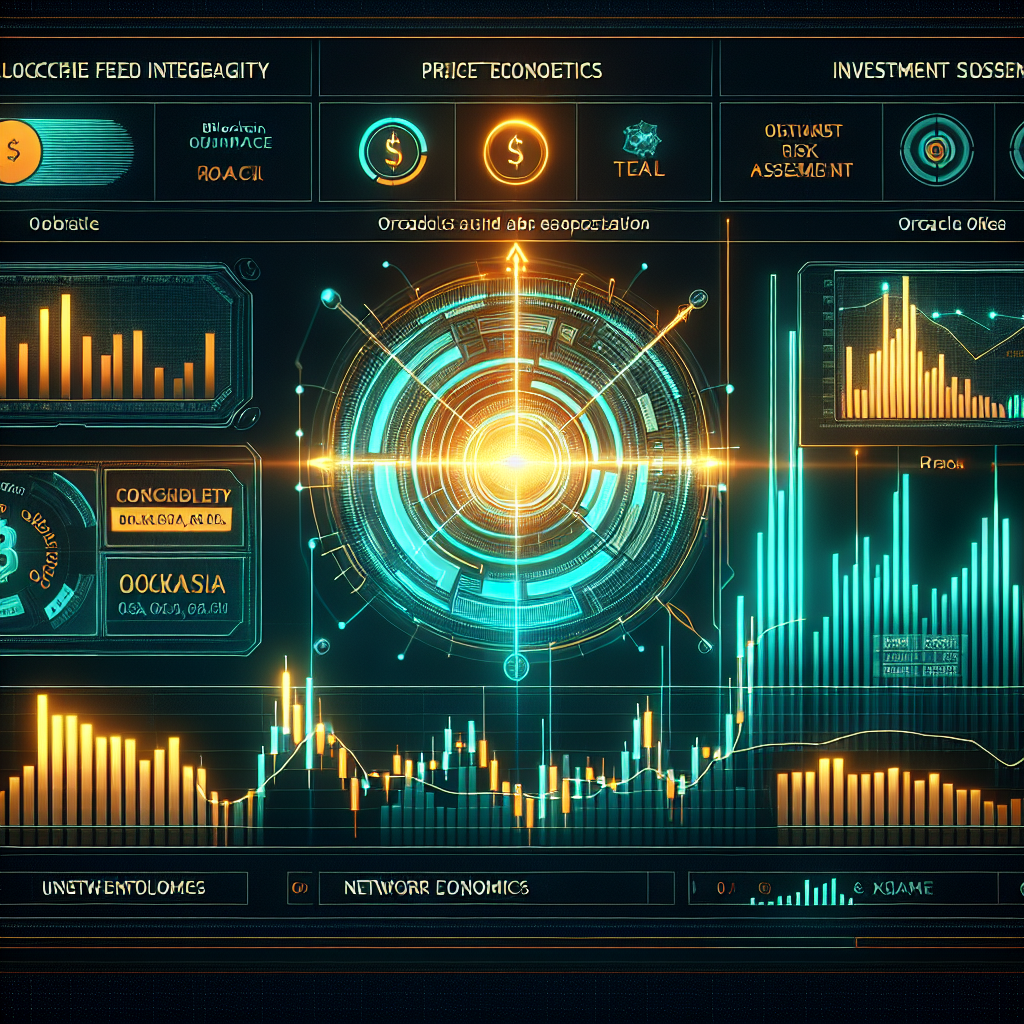Blockchain Oracle Tokens 101: Price Feed Integrity, Network Economics, and Investment Risk Assessment

Introduction
Blockchain applications depend on trustworthy external data to settle smart contracts, trigger automated payments, and price synthetic assets. Oracle networks bridge on-chain logic with off-chain reality, and their native tokens power the economic incentives that keep data honest. This article demystifies oracle tokens by focusing on three core pillars: price feed integrity, network economics, and investment risk assessment. Whether you are a developer integrating oracles, an investor weighing token exposure, or simply crypto-curious, understanding these pillars will help you navigate an increasingly data-driven blockchain ecosystem.
What Are Blockchain Oracles?
An oracle is any mechanism that supplies verifiable real-world data to a blockchain. Oracles pull information such as asset prices, weather statistics, sports scores, or identity credentials, then publish it on-chain so that smart contracts can react. Because blockchains cannot access the internet natively, specialized oracle networks have emerged to solve the “data availability” problem at scale.
Why Oracle Tokens Exist
Oracle network nodes must be incentivized to fetch, verify, and broadcast data. Native tokens create a built-in economic layer: nodes stake tokens as collateral that can be slashed for dishonest behavior and earn rewards or fees for accurate reports. Tokenized economics align the interests of node operators, data providers, and end users, transforming abstract trust into measurable financial risk.
Price Feed Integrity
For decentralized finance (DeFi), a single compromised data point can cascade into liquidations, insolvencies, and market manipulation. Therefore, price feed integrity—the assurance that data is timely, tamper-resistant, and statistically sound—is paramount.
Data Aggregation Methods
Most oracle networks aggregate prices from multiple data providers to minimize outliers. Common approaches include:
• Volume-weighted averages: Prices are weighted by exchange liquidity to reflect realistic trading depth.
• Medianization: Extreme high and low values are discarded, mitigating flash-crash effects.
• Time-series smoothing: Rolling averages dampen short-term volatility, shielding smart contracts from sudden spikes.
Security Mechanisms
Integrity also hinges on cryptographic and game-theoretic defenses:
• Stake-weighted consensus: Node operators must lock tokens that can be forfeited upon proven misbehavior, making attacks economically expensive.
• Multi-layer verification: Some oracles use off-chain computation plus on-chain validation, combining speed with tamper-evident proofs.
• Data integrity proofs: Techniques like TLSNotary or DECO enable nodes to prove data authenticity directly from Web APIs without revealing sensitive information.
Network Economics of Oracle Tokens
Oracle tokenomics orchestrate node participation, determine fee markets, and ultimately sustain network growth. Understanding these mechanics is vital before purchasing or integrating a token.
Token Utility and Incentives
1. Staking: Operators lock tokens to propose or validate data, earning block or fee rewards commensurate with their stake.
2. Payments: DApps pay for data requests in the native token, creating continuous demand.
3. Governance: Token holders vote on protocol upgrades, parameter changes, and whitelisting new data feeds, impacting the network’s direction and security.
Fee Structures and Revenue Models
Oracle projects adopt diverse revenue models:
• Fixed fee per call: Predictable costs for developers, easier budgeting.
• Subscription tiers: High-volume users negotiate lower marginal costs through bulk packages.
• Percentage-based fees: Dynamic pricing tied to transaction value aligns oracle revenue with network usage but may invite front-running if not carefully designed.
Sustainable fee capture that flows back to stakers is crucial for maintaining node profitability without inflating token supply excessively.
Investment Risk Assessment
Oracle tokens may present lucrative upside because data provisioning is a foundational service, yet they also expose investors to unique risks spanning technology, markets, and regulation.
Technical Risks
• Centralization vectors: If a small number of nodes provide the majority of data, collusion becomes trivial.
• Smart-contract exploits: Oracle update logic may have bugs that freeze feeds or allow spoofed submissions.
• Network congestion: High gas fees on underlying blockchains can delay oracle updates, causing stale data and cascading financial losses.
Market Risks
• Token velocity: When tokens are spent rapidly to pay for data and not re-staked, downward price pressure can emerge.
• Speculative hype cycles: Overvaluation driven by narratives rather than adoption may lead to severe drawdowns.
• Competitive displacement: Newer oracle protocols or cross-chain solutions could erode market share and token demand.
Regulatory and Governance Factors
• Security classification: If regulators deem an oracle token a security, exchanges may delist it, reducing liquidity.
• Data licensing: Sourcing proprietary market data without agreements can expose networks to legal action.
• Governance capture: Concentrated token ownership can skew voting outcomes, compromising protocol neutrality.
Best Practices for Evaluating Oracle Token Projects
1. Review audit reports: Independent code audits and formal verification records help gauge technical robustness.
2. Analyze node distribution: Geographical and economic diversity lowers correlated risk.
3. Check on-chain metrics: Daily request volume, active stakers, and average response times reveal real adoption.
4. Scrutinize monetary policy: Inflation schedules should balance node incentives with long-term scarcity.
5. Engage in governance: Participating in votes and community forums offers insights into organizational maturity.
Conclusion
Oracle networks are the connective tissue between decentralized ledgers and the real world, and their native tokens are the lifeblood that circulates incentives, security, and governance. By examining price feed integrity, network economics, and investment risks, stakeholders can form a holistic view of each project’s strengths and weaknesses. As DeFi, gaming, and enterprise blockchain deployments rise, the demand for reliable data services will only intensify, positioning well-designed oracle tokens as critical infrastructure within the Web3 stack. Conduct thorough due diligence, monitor evolving standards, and consider diversification to harness the opportunities while mitigating the hazards inherent in this dynamic sector.